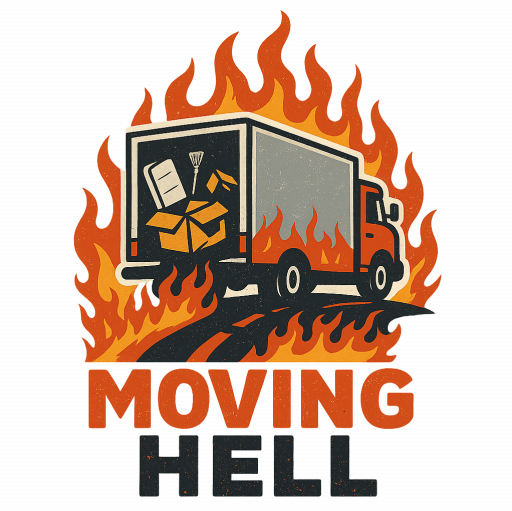Moving is fun!—said no one ever. But with the right moving truck and a few budget-saving tricks, you might just survive the chaos with your wallet (and dignity) intact.
Why Renting a Moving Truck Makes Sense (Unless You’re Rich or Own a Teleporter)
Unless you have a squad of burly friends with pickup trucks or you’re secretly a wizard with teleportation powers, you’ll need a moving truck. It’s the most efficient way to transport your furniture, regrets, and that awkward painting your aunt gave you.
Step 1: Know Thy Move (aka Size Does Matter)
Renting the wrong truck size is like wearing skinny jeans two sizes too small—painful and not at all practical.
- Studio or 1-bedroom: 10-12 ft truck
- 2-3 bedrooms: 15-20 ft truck
- 3+ bedrooms or you’re a furniture hoarder: 22-26 ft truck
Pro tip: If you’re debating between two sizes, go bigger. It’s cheaper than renting a second truck or inventing time travel to fix your mistake.
Step 2: Choose Your Truck Rental Company Like Your Life Depends on It (Because It Kind of Does)
There are three usual suspects in the moving truck mafia:
1. U-Haul
- Pros: Available almost everywhere, lots of size options, cheap base rates
- Cons: Hidden fees, surprise maintenance issues, emotional trauma possible
2. Penske
- Pros: Newer trucks, great for long-distance moves, often cleaner than your mom’s living room
- Cons: Slightly pricier, fewer locations
3. Budget Truck Rental
- Pros: Regular discounts, affordable for short moves, the name literally says “Budget”
- Cons: Truck quality varies, customer service can be…experimental
Money-saving tip: Use coupon codes from websites like RetailMeNot or SlickDeals. You might get 20% off or at least a free moving blanket to cry into.
Step 3: Timing Is Everything (a.k.a. Don’t Move on the First of the Month Like Everyone Else)
If you move during peak times—weekends, end of the month, or full moons—you’ll pay more. Truck prices fluctuate like gas station hot dogs. Try moving mid-week and mid-month. You’ll save money and have fewer people judging your furniture choices.
Step 4: Gas, Insurance & Other Budget Demons
Moving trucks are gas guzzlers. You’ll spend more on fuel than you did on your college textbooks.
- Fuel up before returning: Or they’ll charge you $9 a gallon and a tiny piece of your soul.
- Insurance: Get the coverage if you’re moving long distance or you know deep down you’re a bad driver.
- Mileage: Read the contract—some companies charge per mile like it’s a taxi from 1997.
Step 5: Avoid the Pitfalls (So You Don’t Cry in the Cab)
- Inspect the truck before driving off: Take photos of every dent, scratch, and existential crack in the windshield.
- Watch for hidden fees: Cleaning fees, late fees, and “you looked at the truck funny” fees.
- Don’t trust your GPS blindly: Trucks aren’t allowed on all roads. One wrong turn and boom—you’re under a 10 ft bridge with a 12 ft truck. Congrats!
Bonus Tips for Budget-Conscious Movers (a.k.a. How to Move Without Selling a Kidney)
- Pack smart: Use towels and blankets instead of bubble wrap. That’s what towels were born to do.
- Downsize: Sell stuff you don’t use. If you haven’t touched that fondue pot in 3 years, it’s not coming with you.
- Ask friends to help (bribe with pizza): Free labor tastes better with mozzarella.
- Return early: Some companies refund for unused days. The faster you finish, the faster you can collapse on your mattress.
Top Money-Saving Sites for Truck Rental Comparisons
Use these to shop around and find the best deal:
- Move.org – Side-by-side comparisons of U-Haul, Penske, and Budget
- TruckRental.net – Great for price hunting
- RentalTrucksOnline.com – Easy interface, lots of deals
Final Thoughts: You Got This, Dummy
Renting a moving truck isn’t rocket science. It’s more like adult Tetris with the occasional tire pressure warning light. Be prepared, compare prices, and don’t fall for the upsells. With a little humor, a lot of planning, and maybe a moving playlist that includes “Highway to Hell,” you’ll get through it.
Ready to roll? Then pack those boxes, load that truck, and go chase your new life—preferably without reversing into a tree.
